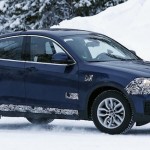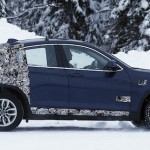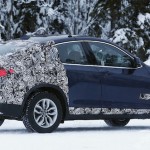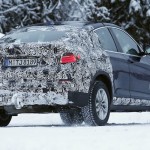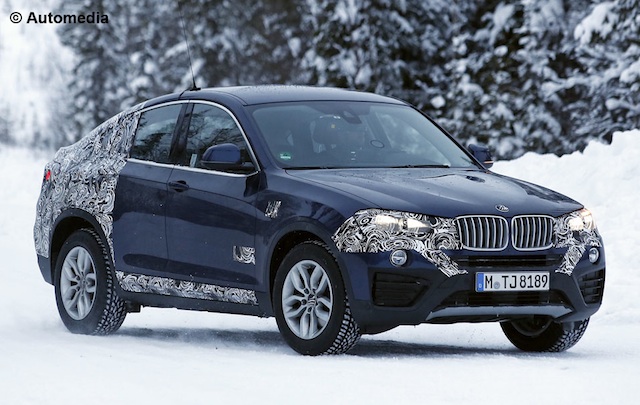
One minute it’s testing in the snow in Scandanavia, the next it will be on the road in New Zealand – that’s BMW’s quick turnaround on the X4, little brother to the X6.
The ‘sports activity vehicle’ will be unveiled in production form at the Geneva show this week and land here probably around July/August. As usual, BMW New Zealand will say only that the X4 is on its way, that pricing and specs will be known closer to its arrival.
The pictures here show the production vehicle, slightly disguised to hide some cosmetic changes made since the concept broke cover at the Shanghai show a few months ago.
The X4 might ape the style of the X6 but it borrows heavily from the X3 platform. Photographers from spy agency Automedia say they haven’t be able to view the interior but expect it to also borrow from the X3.
The X4 will initially be available with a choice of three engines, each one turbocharged and mated to an eight-speed gearbox: the 2.0-litre four-cylinder 28i, the 3.0-litre straight-six 35i, and the diesel 20d. It is not known what New Zealand will get. The bully is that the 28i and 20d will be rear-drive and the 35i all-wheel-drive.
The X4 will, like the X6, offer a high seating position, a premium interior, and a pile of assistance systems and electronic gadgets, but it won’t have the interior space of the X3.
It will be built at the carmaker’s US plant at Spartanburg, South Carolina, alongside the X3, X5 and X6.
Meanwhile, BMW plans to show off new lightweight wheels made of carbon fibre. It has also made hybrid wheels with alloy spokes and carbon-fibre rims. The wheels are a spin-off from carbon-fibre technologies developed during the i3 and i8 projects.
The carmaker’s next move is to convince European Union regulators that the wheels are strong enough for use in production vehicles. BMW’s lightweight construction manager Franz Storkenmaier said: “We save 25 per cent in weight compared to a forged alloy wheel with the hybrid wheel and another 10 per cent if it’s completely carbon.
“It’s the most important kind of weight because it’s unsprung mass and there are also rotating mass advantages.
“The carbon fibre wheels are very damage resistant. They’re actually more damage resistant to kerb hits than standard alloy wheels because the damage polishes out really easily.
“You can scratch it when you park and it’s better to polish out than aluminium. You can have the metal finish to it with the alloy hybrid, but it’s technically a better solution to go all the way and have a full carbon fibre wheel.”


